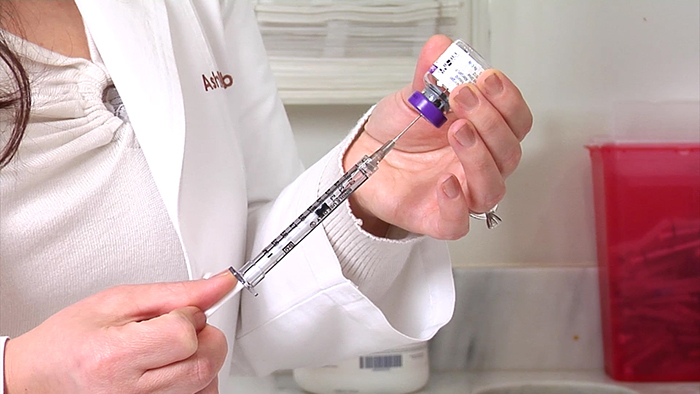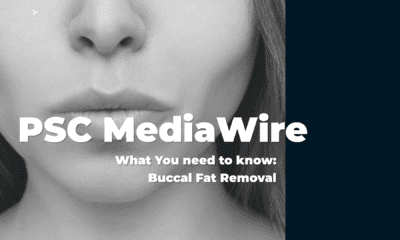In the early 1980s, doctors realized they had an effective neurotoxin for a number of eye disorders — botulinum toxin. Other medicinal uses followed, but by 2002, the FDA opened up a whole new role for Botox® — cosmetic corrections for a variety of areas.
by John Hammarley
and Drs. Shaun Parson and Christine Hamori
Too Much of a Good Thing?
Dr. Christine Hamori says when it comes to the use of Botox, a patient’s age plays an important role in how much a board certified plastic surgeon should use. “You don’t want too shiny, you want to be able to animate and look a little bit your age,” Hamori tells The Plastic Surgery Channel. “But not too flat and waxy. That’s very important.
“And also, I think it’s very important to do a little bit of cheek, up near the side of the eye. It makes a huge difference in looking more youthful and awake, because everyone gets this little ‘V’ under the eye. The combination of Botox and a little bit of filler in these areas can eight to 10 years off right away.”

Long-Term is the Best Approach
Establishing a long-term relationship with your plastic surgeon and developing a Botox strategy that intends to address different areas of your face at different times is the best approach to take, although it can be rare to achieve it, according to board certified plastic surgeon Dr. Shaun Parson.
The Scottsdale-based surgeon tells The Plastic Surgery Channel that more often than not, he has to approach Botox patients on a “here and now” basis. “Sometimes people come in and try it once or twice, and that’s it,” says Parson. “And then sometimes you establish a life-long partnership. And then we’ve all seen the cases where people go way too far with too much Botox.”

Remember, Botox is a Medicine
Dr. Parson reminds us that as much good Botox can do to cheat Father Time, it’s a medicine that can backfire if overused, like any other medicine that sees abuse.
“There are real reports that if you overuse any of these products, there are real and serious consequences,” says Parson. “It’s a powerful medicine, plain and simple, and you can do permanent damage. It’s a paralytic agent and you can permanently damage or fundamentally change how the muscle acts and reacts. It’s our job to inform the patient about the pros and cons, and hopefully establish a bond of trust where we can work together for a long time.”
Avoid the ‘Nicole Kidman’ Forehead
That type of forehead that Kidman once sported – a forehead elongated and ‘waxy’ – is exactly what patients and their plastic surgeons want to avoid, according to Dr. Hamori. “It doesn’t look like you have any expression in your face,” she explains. “The texture of the skin looks too waxy and fake. It looks very artificial. Almost alien.”

To achieve the sought-after natural look, Hamori suggests even coming in more often, but backing off on the size of the doses. “You can dilute some portions and select certain areas one time, then another area the next.”















Facebook
Twitter
Instagram
YouTube
RSS